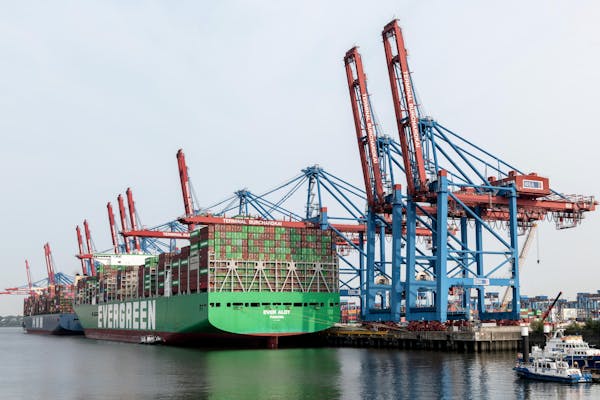Shipping Vertical Packaging Machines from Guangzhou/Shenzhen to Guayaquil, Ecuador: A Comprehensive Guide
1. Shipping Options: Full Container Load (FCL) vs. Less Than Container Load (LCL)
Full Container Load (FCL) is a cost-effective option for larger shipments. For shipments of vertical packaging machines, it’s common to opt for a 20-foot or 40-foot container. This allows the entire container to be used exclusively for your cargo, which is ideal if you have multiple machines or other heavy equipment. The shipping process from Guangzhou or Shenzhen to Guayaquil will typically take around 35 days.
On the other hand, Less Than Container Load (LCL) is more suitable for smaller shipments or when the cargo does not fill an entire container. LCL involves sharing container space with other shippers’ goods. Although LCL shipments may take a bit longer due to consolidation and deconsolidation at the ports, it offers a flexible and cost-efficient solution for smaller or less urgent shipments.

2. Shipping Terms: CIF (Cost, Insurance, and Freight)
Under the CIF (Cost, Insurance, and Freight) shipping term, the seller covers the cost of goods, shipping, and insurance to the destination port, in this case, Guayaquil. This is a common shipping arrangement for exporters, as it provides peace of mind regarding the handling and insurance of the goods during the transit.
The key benefit of CIF is that the buyer is relieved from the responsibility of arranging for freight charges and insurance, while the seller ensures that the cargo arrives at the destination port safely. However, the buyer will be responsible for customs clearance and inland transport from Guayaquil port to their final destination.

3. Transit Time
The shipping duration from Guangzhou or Shenzhen to Guayaquil typically takes around 35 days by sea. This timeline can vary depending on the shipping line and any potential delays at the ports. It’s essential to plan ahead to ensure that the equipment arrives on time, especially when shipping heavy or oversized machinery like a vertical packaging machine.
4. Packaging of Vertical Packaging Machines
Proper packaging is crucial when shipping heavy machinery to ensure the safety of the cargo during transit. Here’s how the vertical packaging machines are typically packaged for shipping:
Wooden Crates or Pallets: The machine is securely mounted onto a wooden pallet or enclosed in a wooden crate. This protects the machinery from external impacts and rough handling during loading, unloading, and transport.
Shrink Wrap or Stretch Film: To prevent dust, dirt, and moisture from damaging the machinery, it’s common to wrap the equipment in shrink wrap or stretch film. This creates a protective layer around the machine while also securing it to the pallet or crate.
Corner Protectors and Strapping: For added protection, corner protectors are used to shield the delicate edges of the machinery, while straps ensure the equipment is tightly secured and does not shift during transit.
Vibration Pads or Shock Absorbers: Vertical packaging machines are often sensitive to vibrations, so shock-absorbing materials or vibration pads may be added inside the packaging to minimize the risk of damage caused by vibrations during shipping.
Marking and Labeling: Clear and prominent labels should be attached to the packaging, indicating the fragile nature of the contents, handling instructions, and the destination port to ensure that the cargo is handled with care during the entire journey.
5. Port Procedures and Customs Clearance
Once the vertical packaging machine reaches Guayaquil, the goods will need to go through customs clearance. This includes:
Customs Documentation: Ensure that all required shipping documents are prepared, including the commercial invoice, bill of lading, packing list, and certificate of origin.
Duty and Taxes: Depending on Ecuador’s import regulations, duties and taxes may apply. As part of the CIF agreement, the seller has already covered the cost of shipping and insurance, but the buyer is responsible for paying customs duties and any other import taxes.
Final Delivery: After clearing customs, the goods can either be delivered directly to the buyer’s facility in Ecuador or stored at a warehouse for pickup. The buyer will need to arrange for inland transport to move the vertical packaging machine from the port to the final destination.



